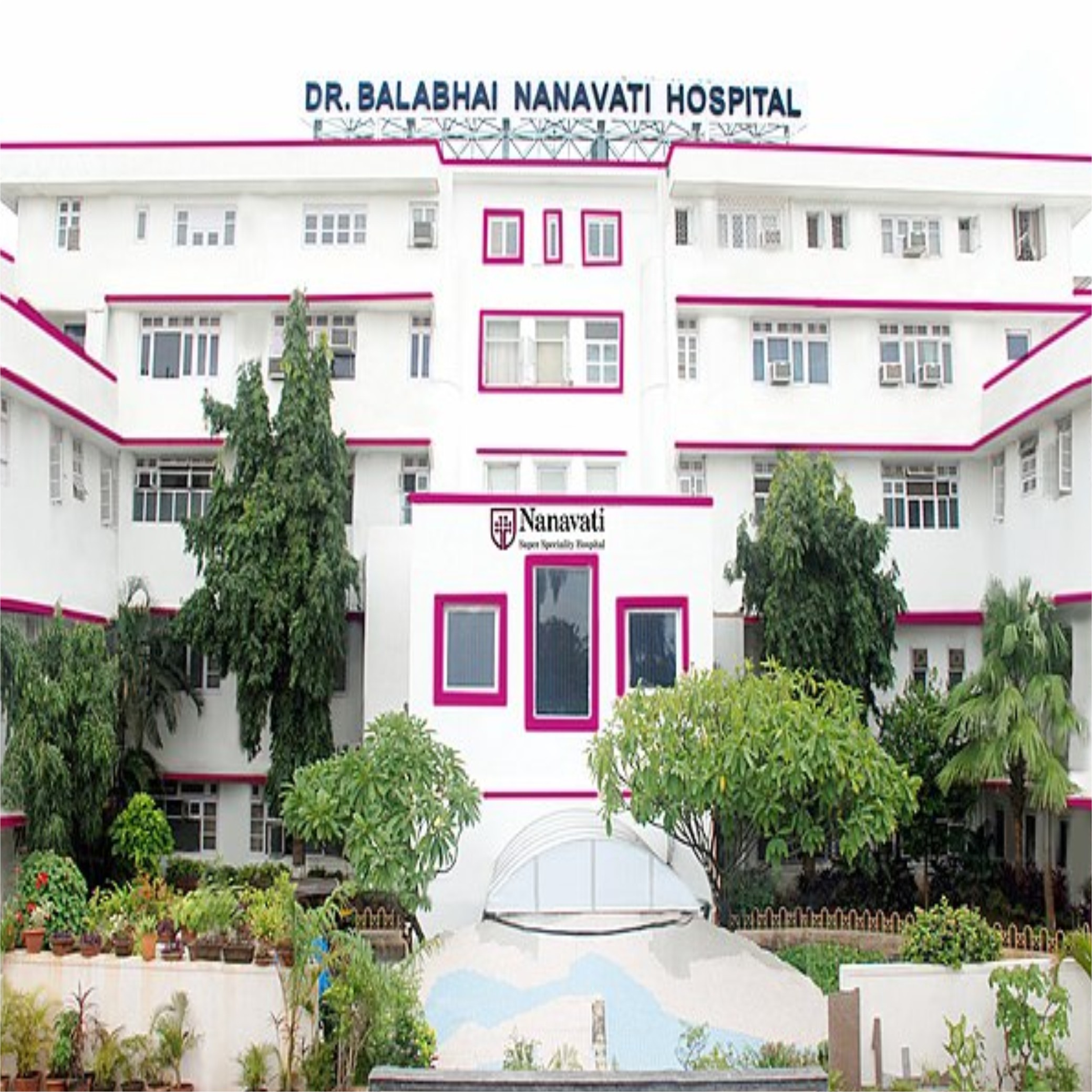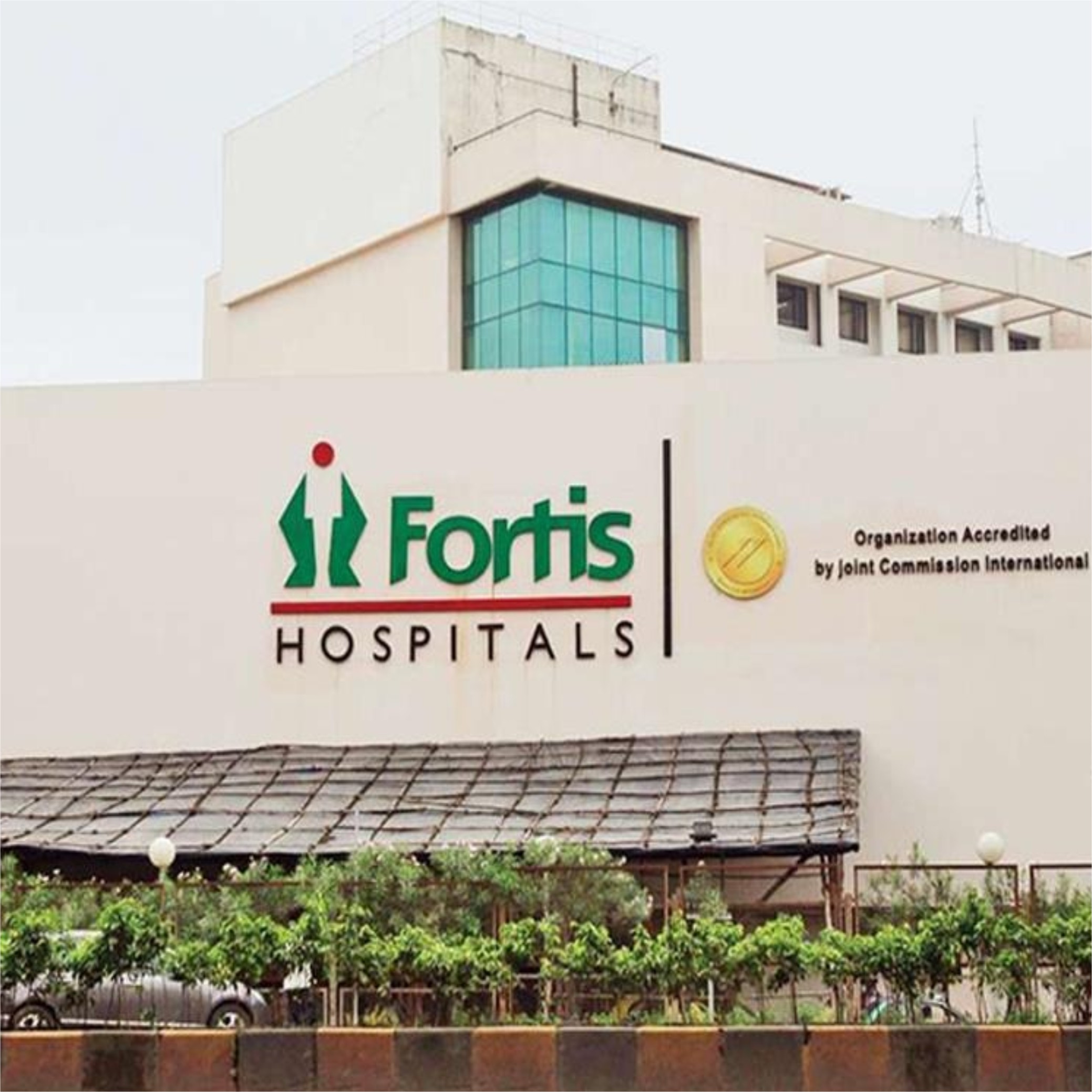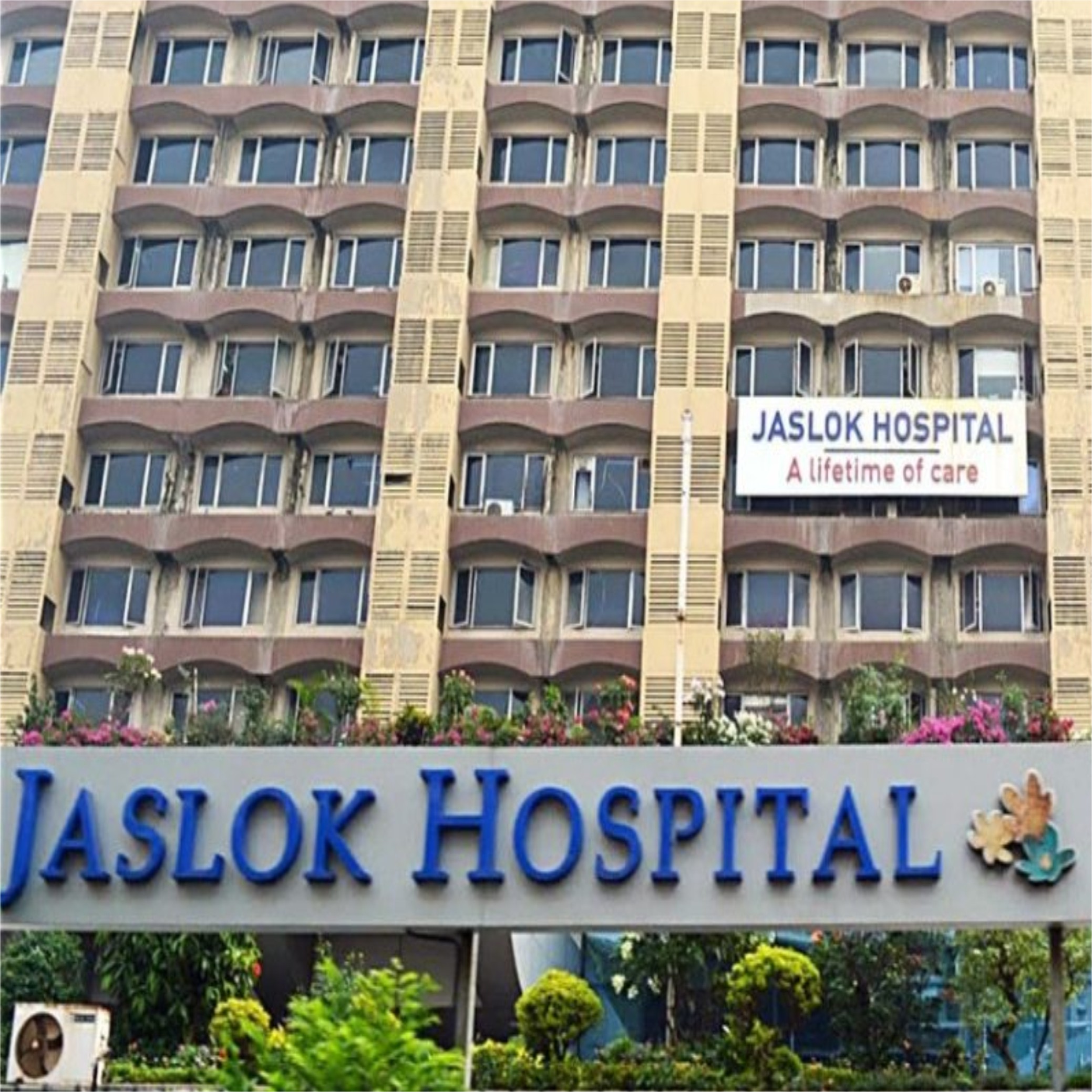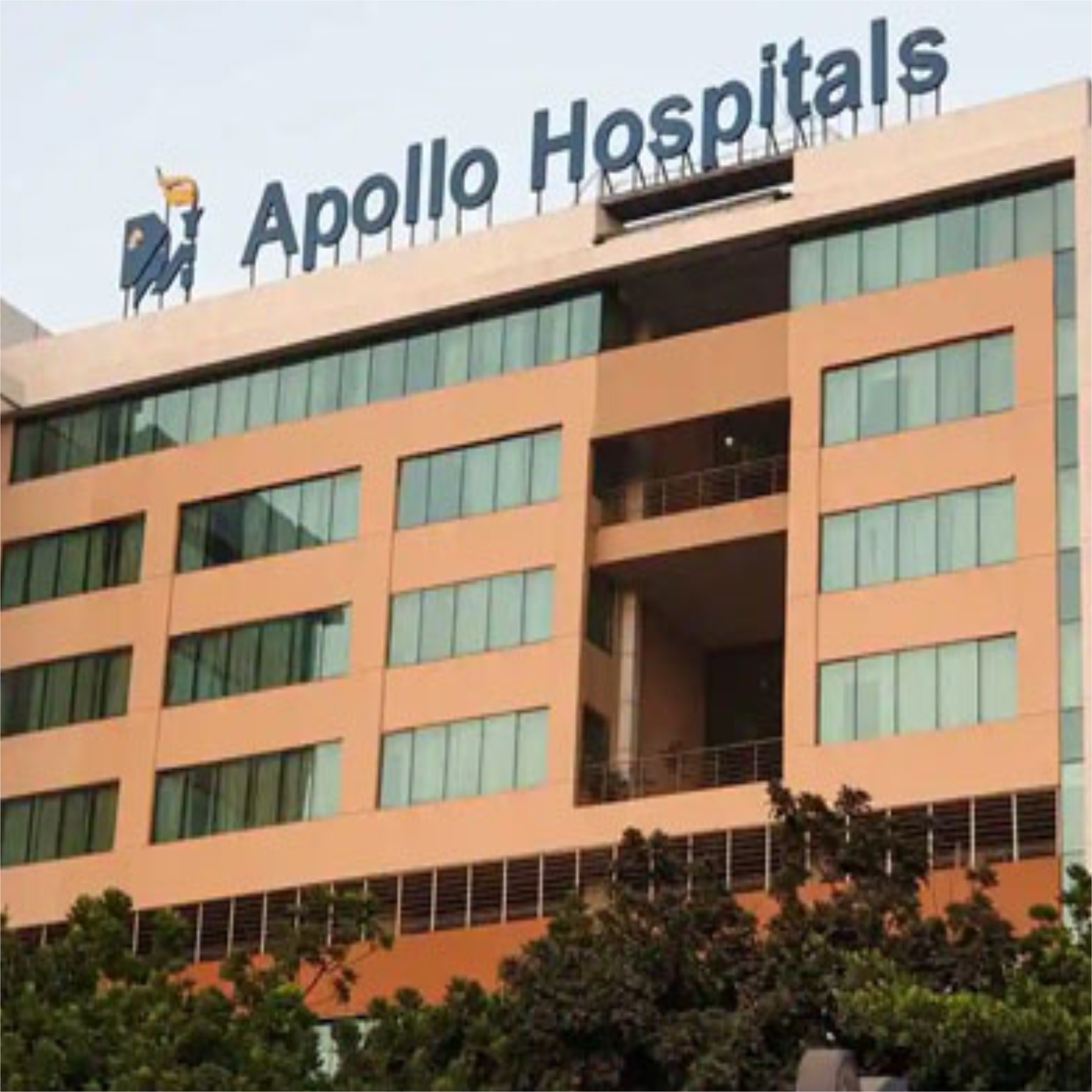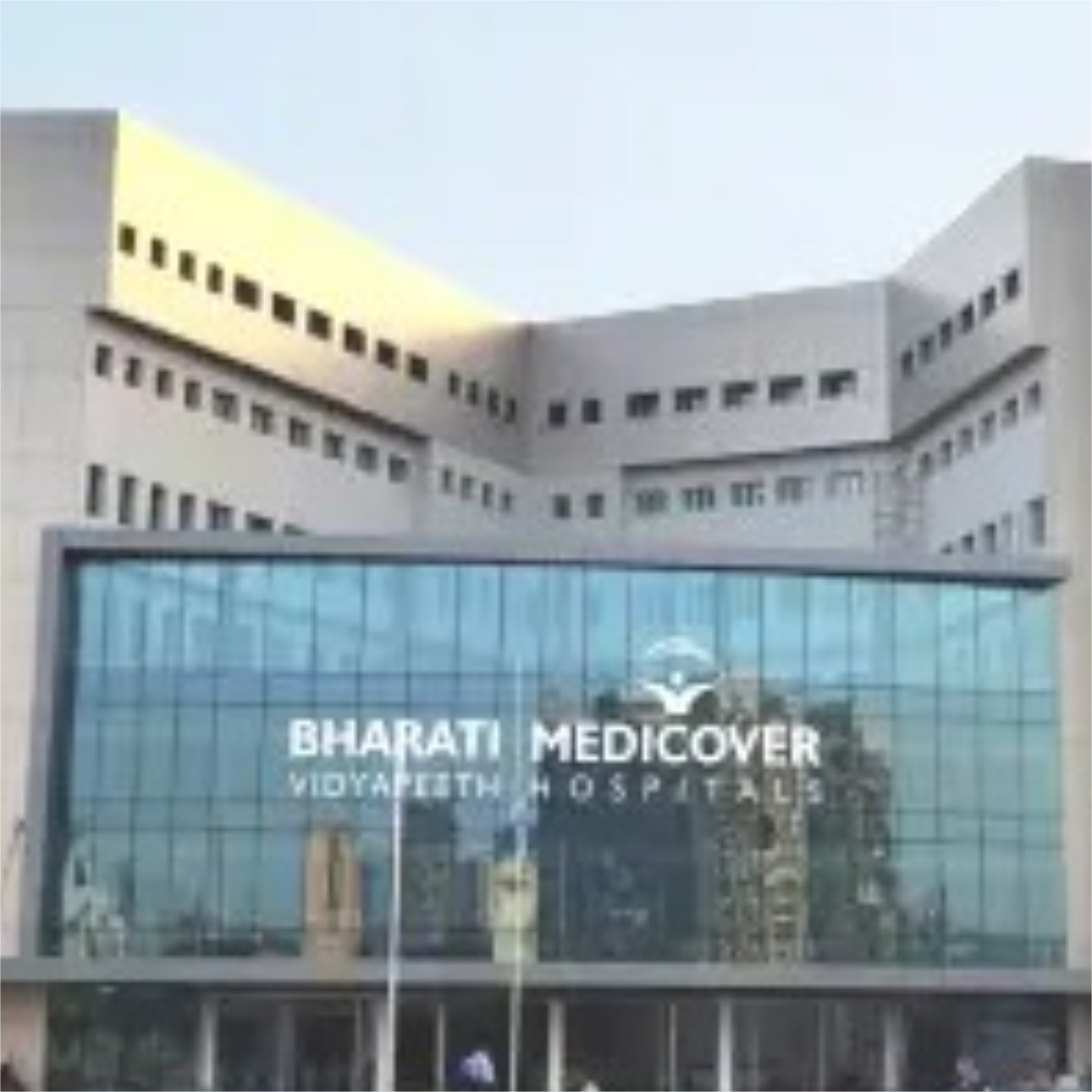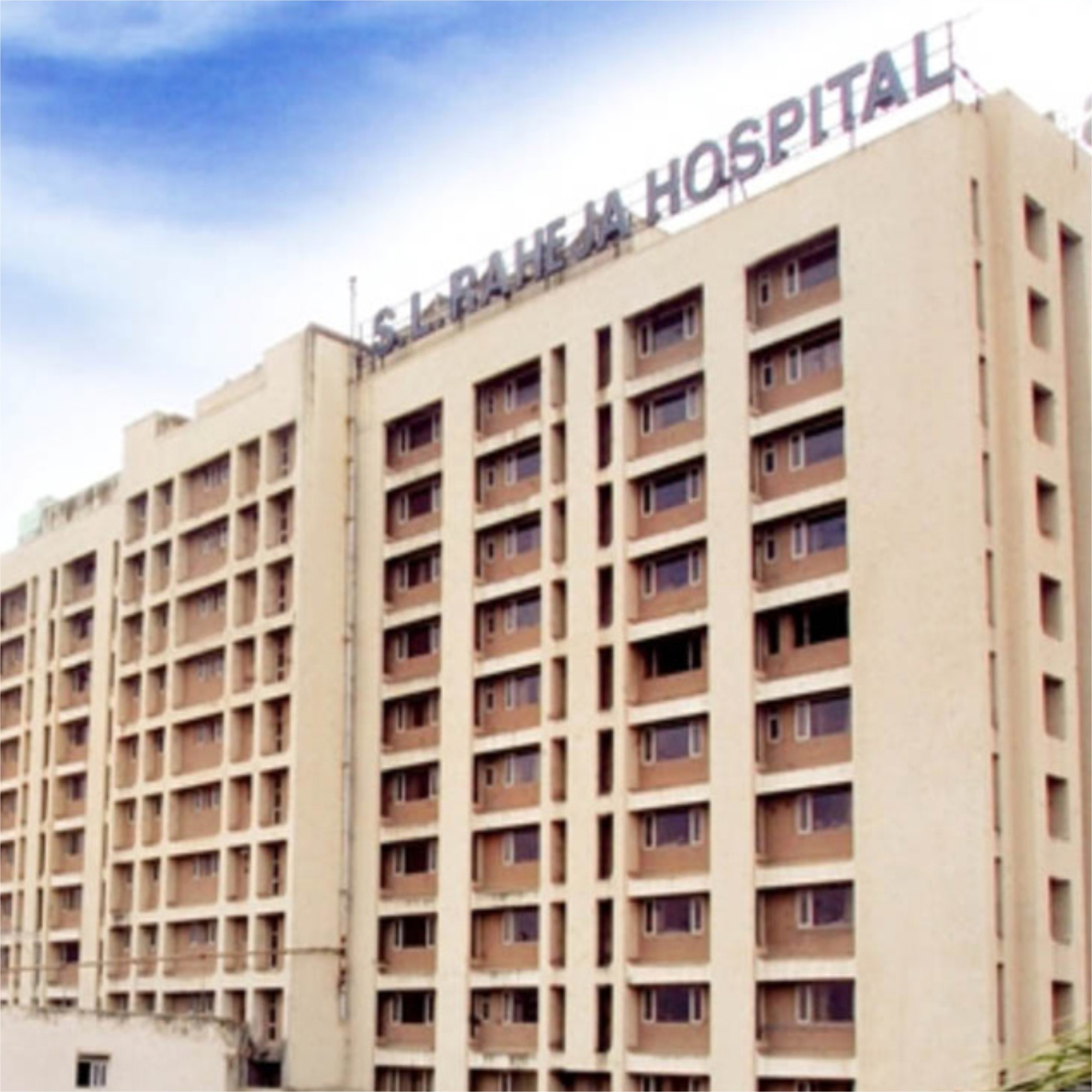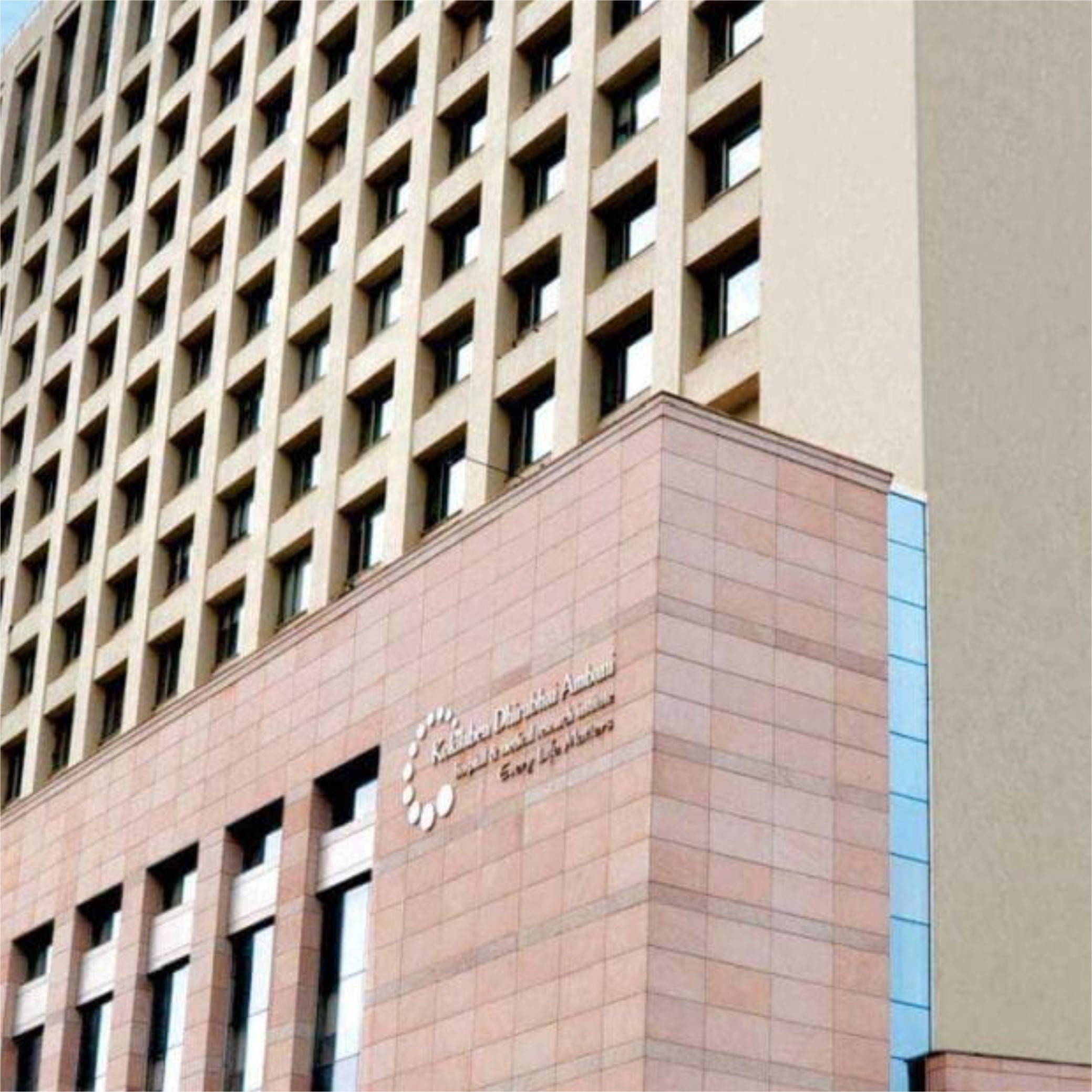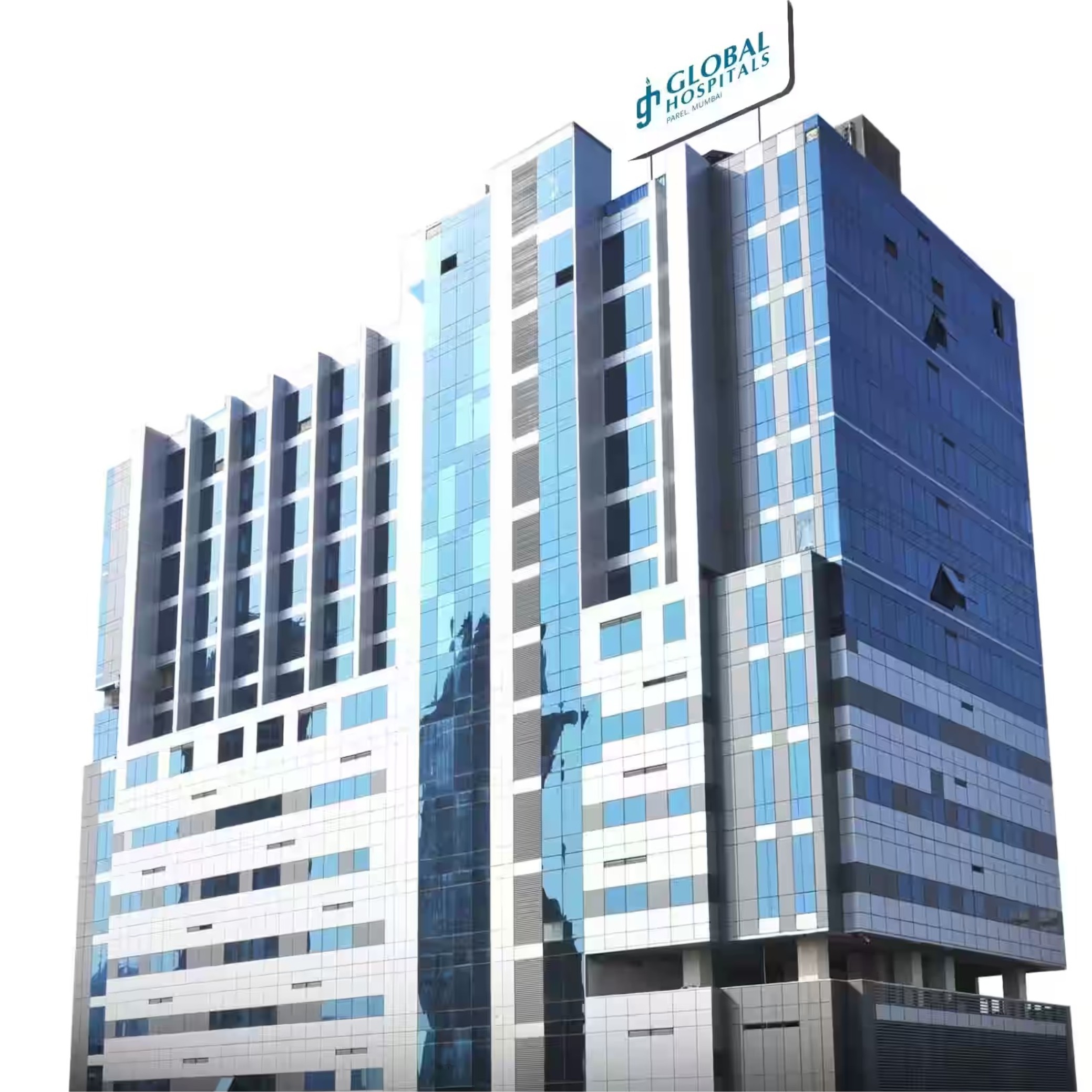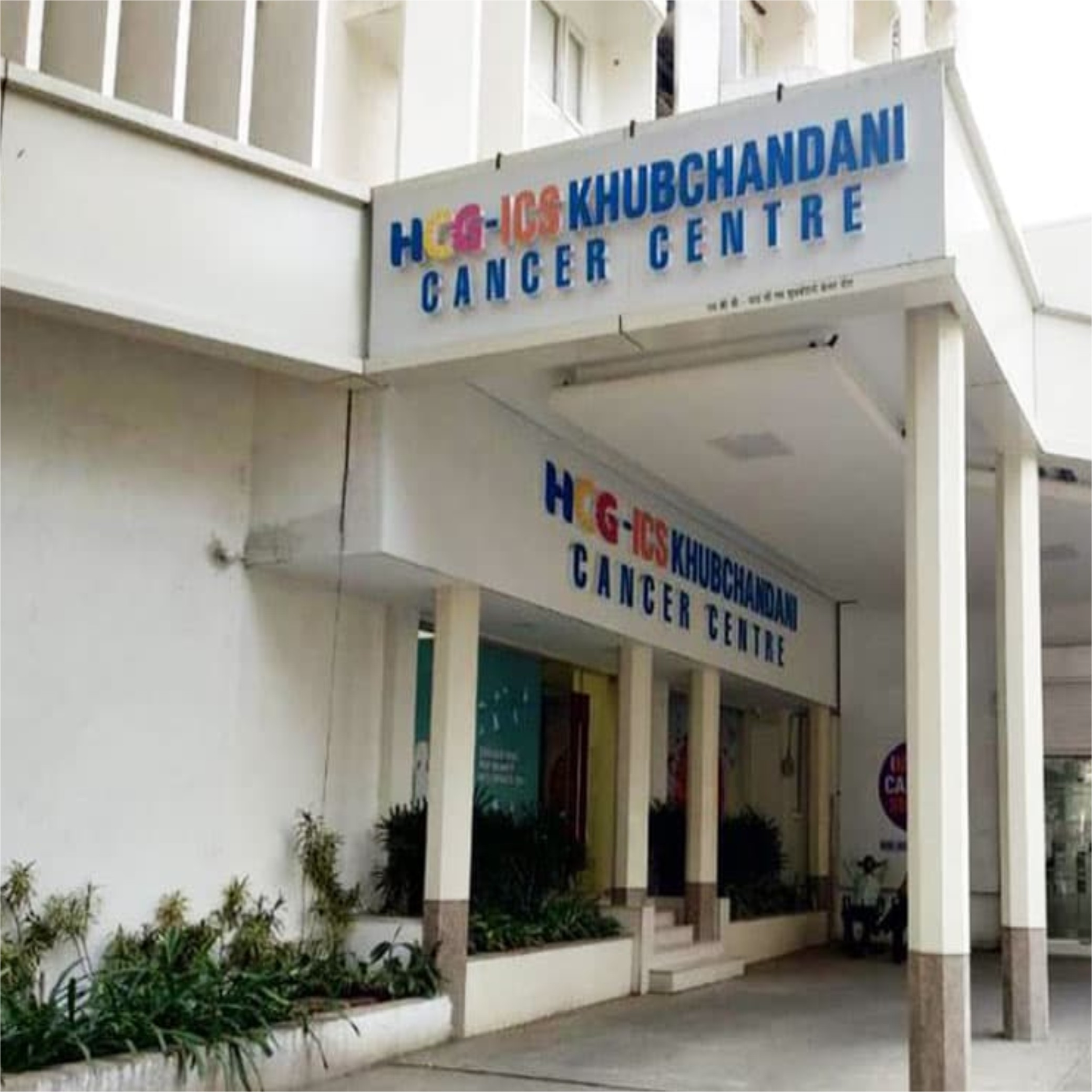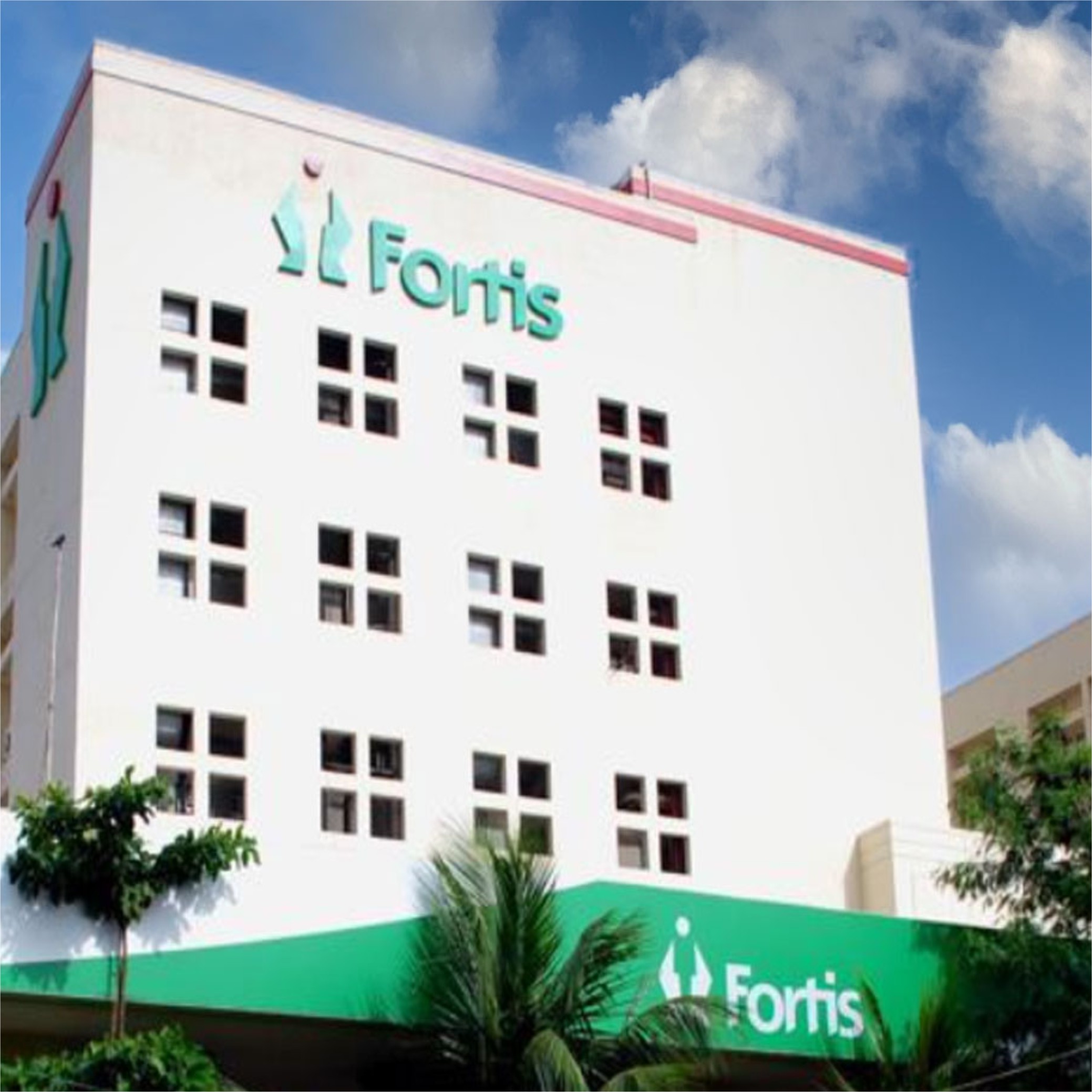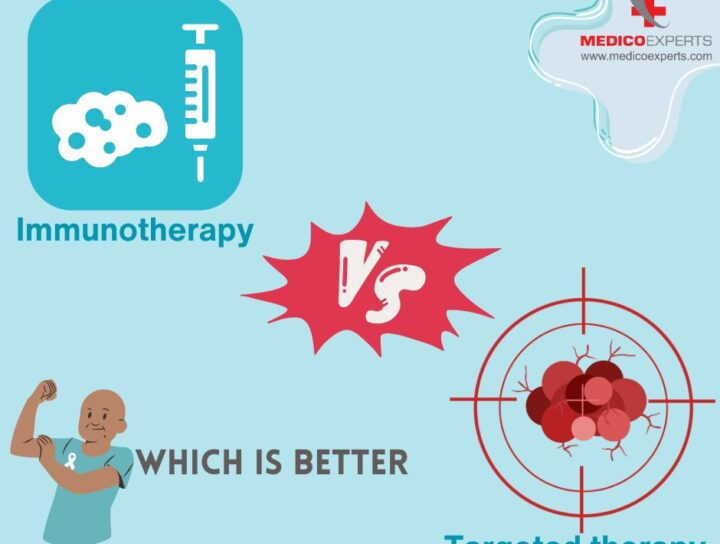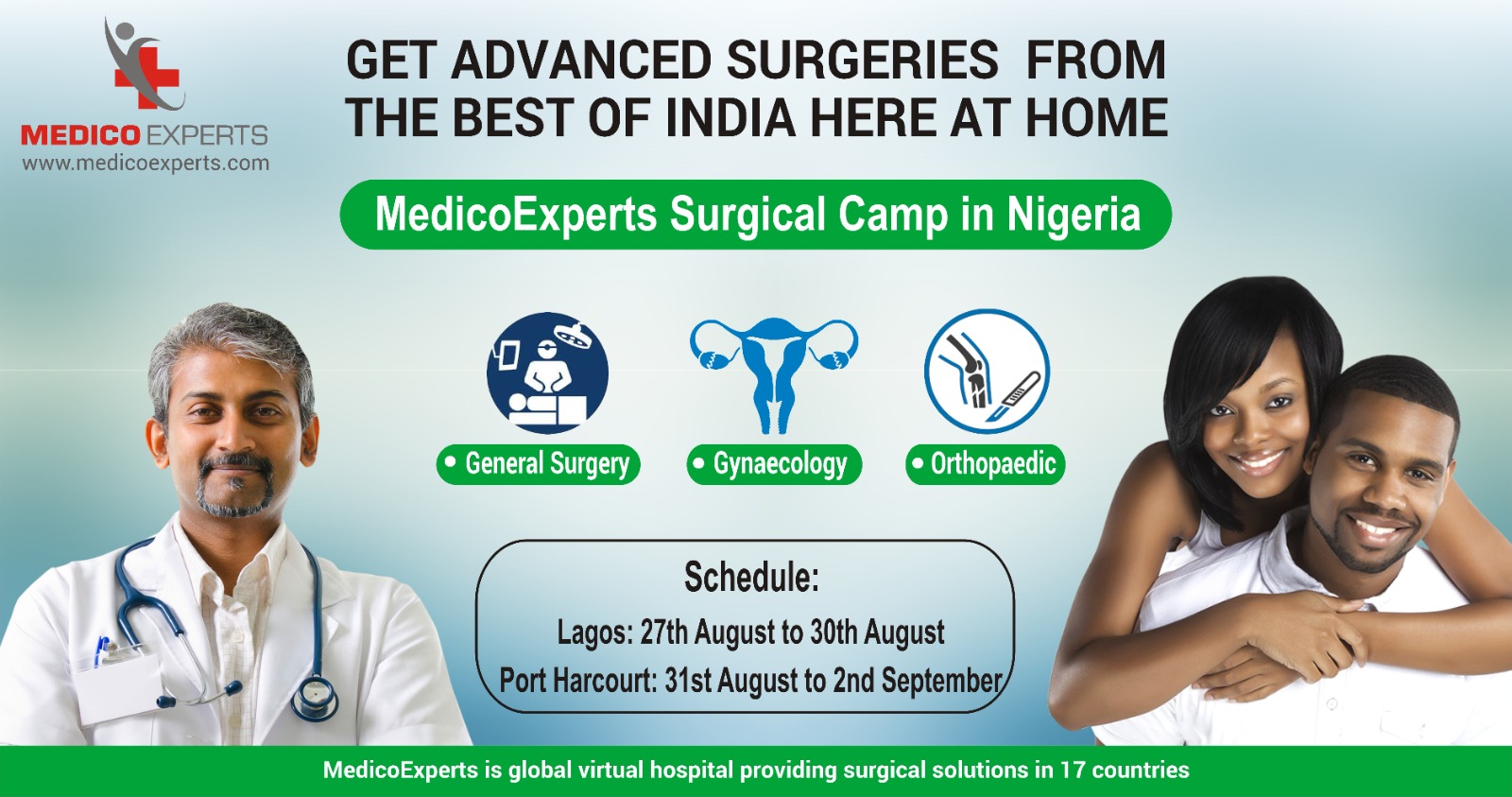Best Robotic surgery in India: Everything you must know
Did you know you can reduce painful recovery time significantly while improving the outcome of surgery?
The reason behind the painful recovery is the large incision (cut on the body) that the surgeon makes to perform the surgery. The body needs time to heal from the cut which is made during the surgery. A simple thumb rule is bigger the cut, the longer the duration to heal.
Moreover, the size of the scar left after the surgery also depends upon the size of the cut made on the body.
With the latest advancement in technologies, all the shortcomings of traditional and laparoscopic surgery are left behind and the new mechanism of surgery is called robotic surgery.
The tools and camera are inserted into a body through a robotic arm through a very small hole and doctors get a much better view and tool movement flexibility to perform the surgery.
Robotic surgeries minimize patient injury by allowing surgery to be performed through small ports or “keyholes” rather than large incisions.
In comparison to traditional open and laparoscopic surgeries, the instruments can access hard-to-reach areas of a patient’s body more easily through smaller incisions.
This results in a faster recovery time, fewer complications, and a shorter stay in the hospital. They are less invasive, painless, and provide better results.


Let’s understand the experience of Mr. Rehman Saha, from Dhaka, Bangladesh who underwent robotic surgery for colorectal cancer treatment.
Mr. Rehman is a 68-year-old owner of a cloth manufacturing company. Rehman has two sons, a daughter, and a wife. Rehman loves to play with his grandchildren.
Two years back, Rehman started having constipation with persistent abdominal discomforts such as pain, gas, and cramps. Initially, Rehman showed himself to a nearby doctor and the doctor prescribed him laxative and pain killer medicine. It didn’t help Rehman’s condition after a month Rehman noticed blood coming out in the stool.
Rehman’s elder son Shariful took his father to the hospital for a checkup. The doctor after physically examining Rehman suggested he do a blood test, stool test, and colonoscopy. Rehman did the tests and the next day test reports came.
The doctor said that Rehman was diagnosed with colorectal cancer. After listening to the news about cancer, Rehman and his family went emotional. The doctor suggested Rehman consult an oncologist for a further line of treatment.
Rehman consulted an oncologist with his reports and surgery was suggested by the doctor. Shariful wanted the best and the most advanced treatment for his father with quick recovery time.
Shariful started his research on the internet and while researching he came across the MedicoExperts website and read about robotic surgery for colon cancer treatment. Which is the most advanced technology for surgery and provides faster recovery. Shariful inquired about his father’s treatment by filling out the inquiry form.
MedicoExperts patient care department got in touch with Shariful. MedicoExperts patient care manager explained to Shariful the Tumor board approach for the treatment. After receiving the reports of his father MedicoExperts arranged the video consultation with the empanelled oncologist.
During the consultation, the doctor explained the treatment and robotic surgical procedure and cleared all the doubts of Rehman and Shariful.
After understanding the treatment protocols Rehman decided to come to India for the treatment.
After two weeks, Rehman came to India along with Shariful and on the same day, Rehman was admitted to the hospital. Pre-evaluation tests were performed to check the current state of cancer.
The surgical oncologist performed the robotic surgery and removed the tumor, it was a long surgery of 4 hours. The surgery was successful. Rehman was very happy with the surgery and felt no pain. On the next day, Rehman was walking around in the hospital. The recovery was very fast and Rehman got discharged within two days after the surgery.
Rehman was very surprised that he didn’t need any pain medication after leaving the hospital.
Rehman was very happy with the treatment and thanked the doctor and MedicExperts.
Before we move ahead with how robotic surgery works, its advantages, and cost.
Let’s first understand what robotic surgery is.

Robotic surgery, also known as robot-assisted surgery, allows doctors to perform a wide range of complex procedures with greater precision, flexibility, and control than traditional techniques allow.
The surgeon can see a 10x magnified, high-definition 3D image of the body’s intricate anatomy thanks to this technology.
The surgeon navigates special surgical instruments that are smaller, more flexible, and maneuverable than the human hand using controls on the console.
The surgeon’s hand movements are replicated by the robot, which reduces hand tremors. As a result, even during the most complex procedures, the surgeon can operate with greater precision, dexterity, and control.
Let’s understand how robotic surgery works.
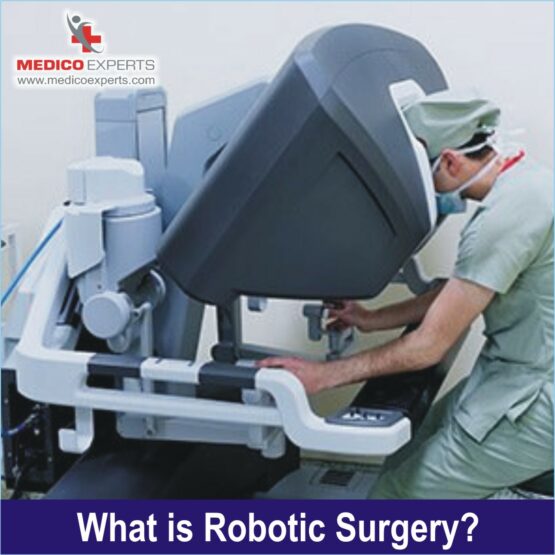
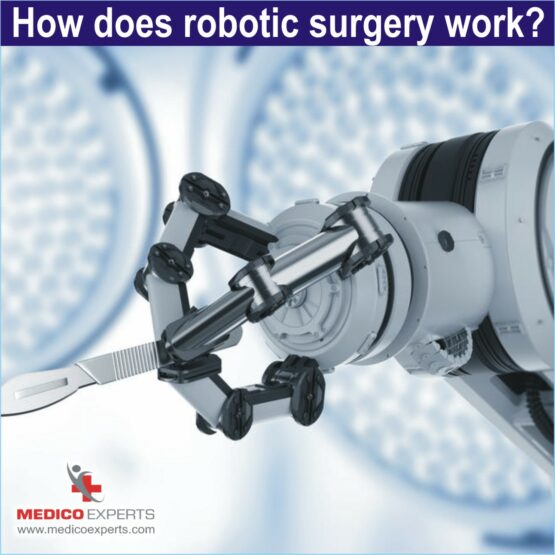
Robotic surgery or robot-assisted surgery is performed using the da Vinci surgical system, which comprises machinery, computer, and electronics that provide surgeons an easy-to-use tool for controlling surgical instruments.
During the procedure, general anesthesia is used. In the operating room, the surgeon works at a computer console. Surgeons control several precision-guided robotic arms that hold and navigate miniature instruments in order to make small incisions in the patient.
The surgeon has a magnified view of the operating site thanks to a small video camera attached to a robotic arm. Through the computer console, the surgeon’s finger, hand, and wrist movements are transmitted to the surgical instruments attached to the robot’s arms.
The surgical instruments moved with greater control, precision, and flexibility than in standard laparoscopic surgeries because the robotic arms can rotate 360 degrees. Your surgeon is in control of the robot throughout the procedure.
Now, Let’s understand the types of cancerous and noncancerous tumors that can be treated by robotic surgery.
What conditions can be treated with robotic surgery?
A wide range of conditions can benefit from robotic surgery. These include:
- Colorectal Surgery
- General surgery
- Gynecologic surgery
- Heart surgery
- Endometriosis
- Head and Neck (Transoral) surgery
- Thoracic surgery
- Urologic surgery
Robotic surgery is used for below cancer
- Colon and Rectal cancer
- Endometrial (Uterine) cancer
- Cervical cancer
- Esophageal (Food pipe) cancer
- Stomach cancer
- Early cases of pancreatic cancer
- Kidney cancer
- Bladder cancer
- Prostate cancer
- Throat cancer
- Tongue cancer
- Tonsil cancer
Let’s now understand the advantages of robotic surgery.
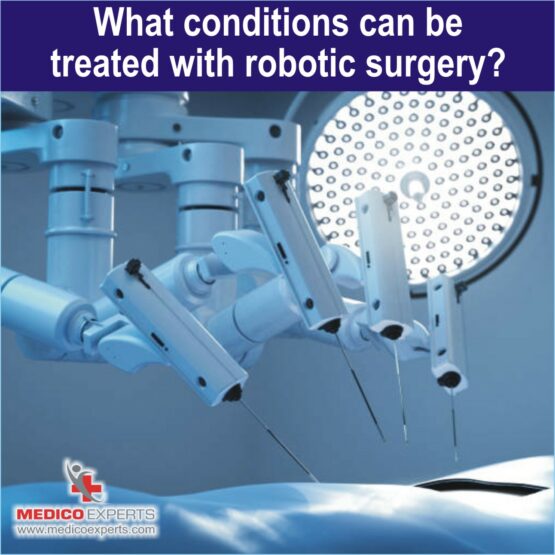
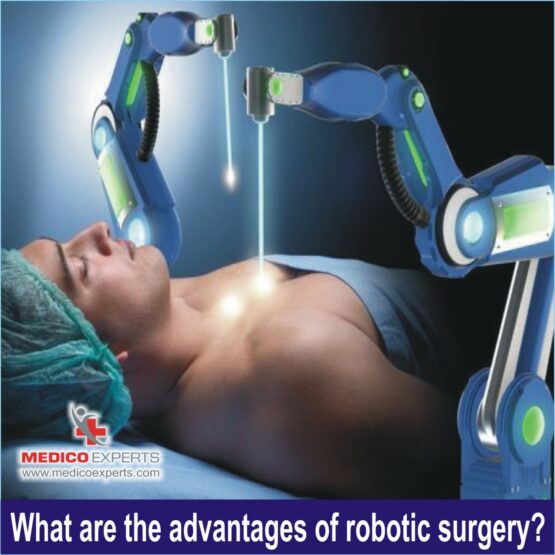
What are the advantages of robotic surgery?
In a nutshell, robotic-assisted surgery benefits you in terms of shorter recovery time, small scars, and better surgical outcomes due to precision surgery.
The better surgical outcomes are due to better and magnified visibility of organs for the surgeon along with better maneuverability of instruments.
Robotic surgery advantages for surgeons:
- The surgeon has a greater range of motion and dexterity.
- The surgeon sees a high-resolution, highly magnified image of the operating field.
- The surgeon has better access to the operation site.
Robotic surgery advantages for patients:
- Shorter hospital duration
- Infection risk is reduced.
- Less pain
- Less blood loss
- Quicker recovery
- Smaller, less noticeable scars
What is the success rate of robotic surgery in India?
The success rate of robotic surgery is 93 – 97%.
Let’s understand the cost of robotic surgery and the different factors that influence the costs.
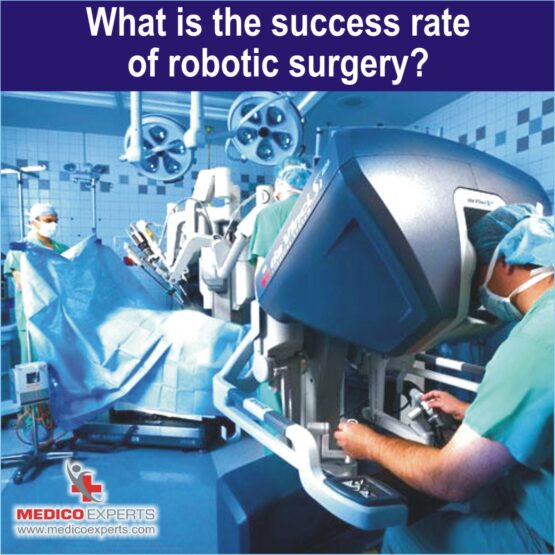
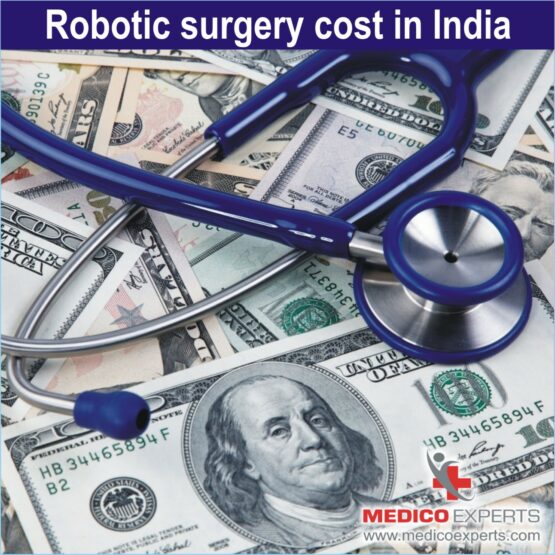
The cost of performing robotic surgeries is 20 to 30% higher than the regular laparoscopic procedures.
Depending upon the surgery, The cost of robotic surgery in India ranges from 7500 to 9500 USD (573843 – 726868 INR).
When compared to the United States, the United Kingdom, Singapore, and other countries, the cost of robotic surgery in India is 70% to 80% lower without sacrificing the quality of service or infrastructure, and outcomes.
The following are some of the factors that influence the cost of robotic surgery,
- Admission and doctor fee
- Age of the patient
- Type of Robotic Surgery
- The medical condition of the patient
- Post-surgical complications that are involved
- Admission room that you opted for
- Any other lab tests or examination tests such as X-rays, ECGs, etc.
MedicoExperts can help you to get a personalized treatment plan from its empaneled hospitals.
Frequently Asked Questions and patient concerns:
1. Is robotic surgery covered by insurance?
Robotic surgery is generally covered by any insurance that covers minimally invasive surgeries. However, your insurance plan and coverage benefits will still play a role.
2. How is robotic surgery better than traditional surgery?
In robotic surgery, surgeons use robotic technology to perform complex surgical procedures. In addition, compared to open surgeries, robotic surgery provides better visualization, proficiency, and ergonomics.
It is performed with smaller incisions and greater efficiency, ensuring better patient outcomes. Because you will be in less pain during and after surgery, you may not need pain medication during recovery.
Robotic surgery is safer and more beneficial than traditional open surgery in every way.
3. Is robotic surgery better than laparoscopic surgery?
Robotic surgery is a better option because it is designed to address the limitations of laparoscopic surgery, such as the limited range of motion of surgical instruments and poor ergonomic positioning of the surgeon. The benefits of robotic surgery include improved visualization and proficiency.
4. Is there a difference between laparoscopic and robotic surgery?
In many ways, laparoscopic and robotic surgeries are similar. In both procedures, the surgeon makes several small incisions and guides their work with a video camera attached to a laparoscope or robot’s arms. The following are the differences between robotic surgery and laparoscopic surgery:
- Rather than holding and manipulating the surgical instruments themselves, the surgeon sits at the computer console throughout the surgery and uses hand controls to manipulate the robot.
- Robotic surgery uses surgical instruments that can move like a hand, allowing for greater precision, range of motion, and less bleeding and pain.
5. After the robotic surgery, how long should I expect to be in the hospital?
Since it is a minimally invasive procedure, there is no need for a lengthy hospital stay.
Unless your treating doctor says otherwise, you may be asked to stay for a day or two for observation before being discharged.
6. What are the disadvantages of robotic surgery?
The following are some of the disadvantages of robot-assisted surgery:
- Only available in centers that can afford the technology and have surgeons who have undergone special training.
- Nerve damage and compression are possible side effects.
- Robotic failure, which is extremely uncommon.
7. What are the side effects of robotic surgery?
Although robotic surgery is designed to minimize side effects, you will almost certainly experience some as a result of your procedure.
The type of cancer surgery performed, the extent of the surgery, your overall health, and other factors may all have an impact on side effects.
The following are some of the possible side effects of robotic surgery: pain, fatigue, bleeding, and loss of appetite.
8. Does the robotic surgery system operate by itself?
No, the robotic arm will be controlled by a surgeon who will be seated at the console.
The robotic arms work in the same way that a surgeon’s hands do, but with more precision and the ability to reach inaccessible areas and operate tumors more efficiently.
Best hospital for robotic surgery in India
The best hospitals for robotic surgery in India are equipped with cutting-edge technology, skills, experience, and the latest protocols to provide the best outcome. Here is a list of the hospitals which provide the best robotic surgery in India:

MedicoExperts is a Global virtual hospital which is established to offer quality healthcare services at affordable pricing without compromising the success rates of the treatment.
MedicoExperts is having a network of highly experienced super specialist doctors and well equipped hospitals across the globe and offering second opinion through online video consultation and surgical interventions through its empanelled super specialist doctors at its network hospitals in 17 countries from 3 continents.
By the virtue of its approach and model, MedicoExperts is successfully achieve to deliver
- Latest and most advanced treatments with success rates of international benchmarks.
- Multiple cost options depending upon the hospital facilities, with the same doctor.
- Treatment option in multiple cities/state/countries.
- Trust and peace of mind.
Most suitable for patients who are looking for:-
- Planned Surgeries and treatment from most experienced doctors and at multiple cost options as per hospital facilities with best possible outcomes.
- Second Opinion from expert doctors.
- Complex cases involving multi specialities
- International patients looking for treatment from Indian doctors
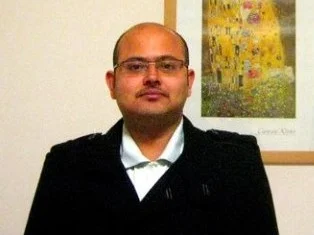
Author Bio:
Dr. Subhamoy Mukherjee – Ph.D. (Oncology)
Dr. Subhamoy Mukherjee is a molecular oncologist with experience of working with genomic profiles. He has several years of experience in scientific writing. He takes strong interest in making people aware of different treatment approches in cancer, acute and chronic diseases. He also has interest in innovative approches for treating different mental and physical illnesses.
Content Medically Reviewed By MedicoExperts Editorial & Clinically Review Board








